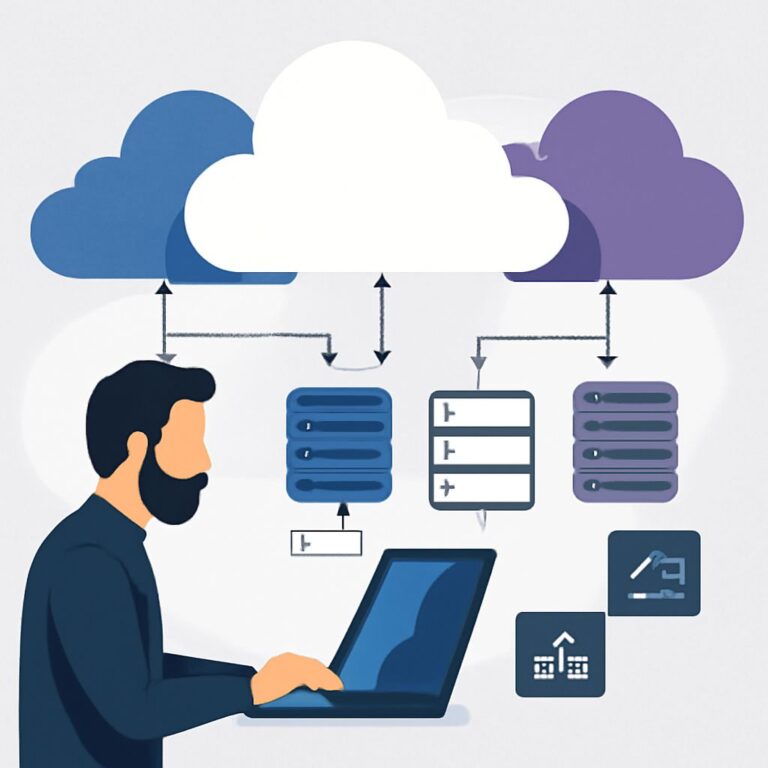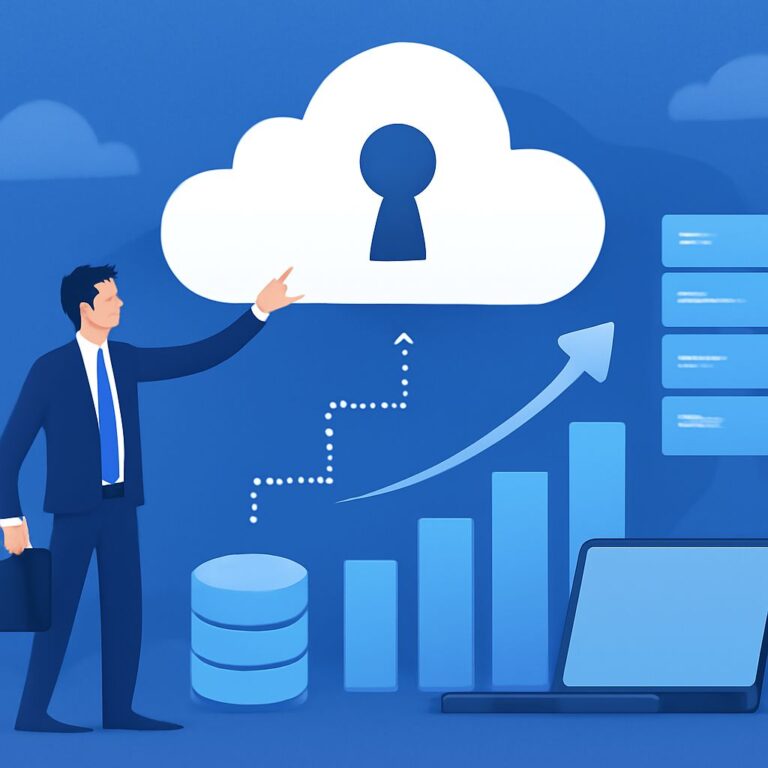In today’s digital landscape, cloud computing has emerged as a cornerstone technology, transforming how businesses operate and individuals utilize IT resources. From startups to multinational corporations, the adoption of cloud services can lead to increased efficiency, scalability, and flexibility. However, for those new to the world of cloud computing, the multitude of options and terminologies can be daunting. This article will provide a comprehensive guide on how to get started with cloud computing today, covering key concepts, popular services, and best practices.
Table of Contents
Understanding Cloud Computing
Cloud computing refers to the delivery of computing services over the internet, allowing users to access and use technology resources without needing to own and manage physical infrastructure. The core characteristics of cloud computing include:
- On-Demand Self-Service: Users can provision resources automatically without requiring human intervention.
- Broad Network Access: Resources are accessible over the network through standard mechanisms across different platforms.
- Resource Pooling: Providers pool resources to serve multiple customers using a multi-tenant model.
- Rapid Elasticity: Capabilities can be elastically provisioned and released based on demand.
- Measured Service: Resource usage is monitored, controlled, and reported for transparency.
Types of Cloud Services
Cloud services can be categorized into several models, each catering to specific needs:
1. Infrastructure as a Service (IaaS)
IaaS provides virtualized computing resources over the internet. Users can rent IT infrastructure such as servers, storage, and networking on a pay-as-you-go basis. Popular IaaS providers include:
- AWS EC2 (Amazon Web Services)
- Microsoft Azure
- Google Cloud Compute Engine
2. Platform as a Service (PaaS)
PaaS delivers a platform allowing customers to develop, run, and manage applications without dealing with the infrastructure. Examples include:
- Google App Engine
- Microsoft Azure App Service
- Heroku
3. Software as a Service (SaaS)
SaaS provides software applications over the internet, eliminating the need for installations or downloads. Common SaaS applications include:
- Google Workspace
- Salesforce
- Microsoft 365
Choosing the Right Cloud Provider
When selecting a cloud provider, consider the following factors:
- Service Offerings: Assess whether the provider has the necessary services for your needs.
- Compliance and Security: Ensure that the provider complies with industry regulations and has robust security measures.
- Pricing Structure: Compare costs and consider the pricing model that makes the most sense for your usage.
- Support and Reliability: Look for a provider with strong customer support and a reliable uptime record.
Getting Started with Cloud Computing
To embark on your cloud computing journey, follow these steps:
1. Define Your Goals
What do you want to achieve with cloud computing? Some common goals include:
- Cost savings
- Scalability
- Improved collaboration
- Enhanced disaster recovery
2. Select a Cloud Service Model
Based on your goals and requirements, choose between IaaS, PaaS, and SaaS. Evaluate which model aligns best with your use case.
3. Choose a Cloud Provider
After assessing various providers, select one that meets your needs. Create an account and explore their offerings.
4. Start Small
Begin your cloud journey with a pilot project or a small deployment to familiarize yourself with the platform. This reduces risk and provides an opportunity to learn.
5. Learn and Experiment
Cloud providers offer extensive documentation and tutorials. Take advantage of these resources to learn about the platform’s capabilities. Participate in community forums or training programs for additional support.
| Cloud Provider | Strengths | Use Cases |
|---|---|---|
| AWS | Broad service selection, global reach | Enterprise applications, big data analytics |
| Azure | Strong integration with Microsoft products | Hybrid cloud environments, enterprise applications |
| Google Cloud | Leading in AI and machine learning capabilities | Data analytics, application development |
Best Practices for Cloud Adoption
To ensure a smooth transition to cloud computing, consider the following best practices:
- Establish a Cloud Governance Framework: Define policies for resource usage, security, and compliance.
- Monitor Usage and Performance: Utilize monitoring tools to keep track of resource consumption and application performance.
- Implement Security Measures: Incorporate strong security practices, including regular audits and access controls.
- Develop a Disaster Recovery Plan: Ensure you have a strategy to recover data and applications in case of failures.
The Future of Cloud Computing
The cloud computing landscape is continuously evolving. Emerging trends include:
- Serverless Computing: Developers can build applications without managing servers.
- Multi-Cloud Strategies: Organizations are opting for a mix of services from different providers to enhance resilience.
- AI and Machine Learning Integration: Cloud services are increasingly incorporating AI capabilities for smarter applications.
Conclusion
Cloud computing is no longer a futuristic concept; it is a reality that offers immense benefits for businesses and individuals alike. By understanding the fundamentals, selecting the right services, and implementing best practices, you can harness the power of the cloud to transform your operations and drive innovation. Start your journey today and stay ahead in the digital age.
FAQ
What is cloud computing?
Cloud computing is the delivery of computing services over the internet, including storage, processing, and software applications.
How do I choose a cloud service provider?
Consider factors such as service offerings, pricing, security features, and customer support when selecting a cloud service provider.
What are the benefits of using cloud computing?
Benefits include scalability, cost efficiency, flexibility, and accessibility from anywhere with an internet connection.
What steps should I take to get started with cloud computing?
Begin by assessing your business needs, researching cloud options, and creating a migration plan to shift your data and applications to the cloud.
Is cloud computing secure?
Yes, but security varies by provider. It’s important to review their security measures and compliance with standards to ensure your data is protected.
Can I use cloud computing for small businesses?
Absolutely! Cloud computing offers scalable solutions that are perfect for small businesses, allowing them to access advanced technologies without heavy investments.






